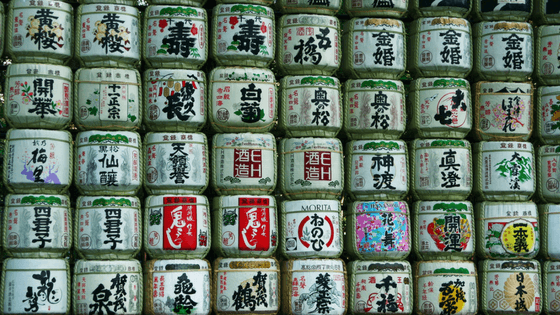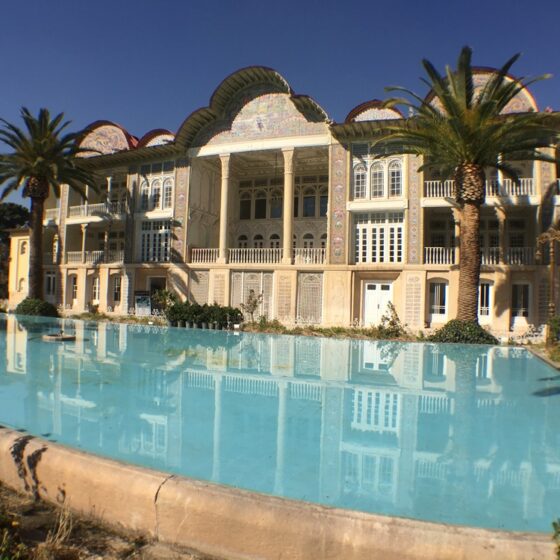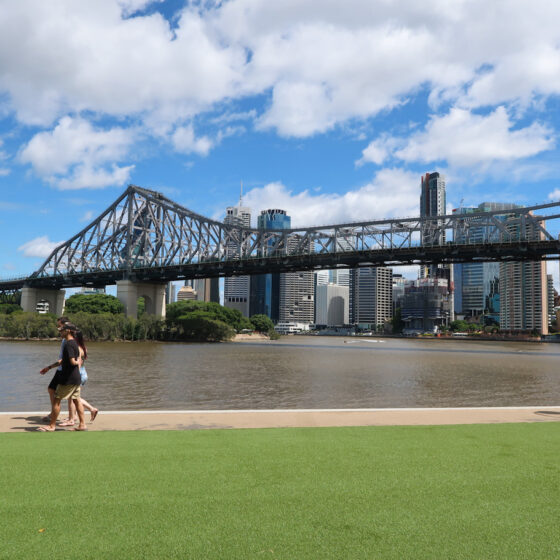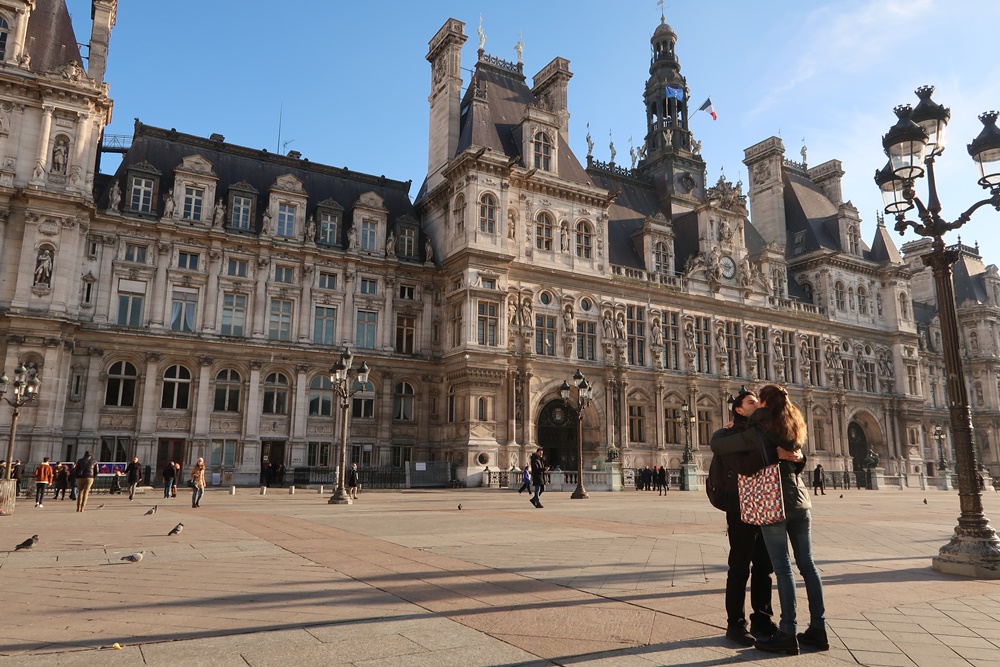Tokyo Travel guide

Updated 3/4/2020:
Tokyo is officially the most populous city in the world. This sprawling metropolitan is where 37 million people call home.
Tokyo lures visitors by its unique gastronomy, culture, architecture and history. With its futuristic and alluring charm, Tokyo has made it to one of the must-go Asian destinations.
Almost nowhere in the world you can find a city with a combination of so many skyscrapers dazzling the skyline, pristine temples sitting everywhere, stunning gardens and reserves, seemingly unlimited choices for the shopaholics and most importantly, the always humble and hospitable Tokyoites!
This Tokyo Travel Guide aims to help you in planning your travels to this magnificent city!
Jump to:
Accommodation
This part of the Tokyo Travel Guide discusses about the accommodation options that are available in Tokyo. Read more to find out because there’s more than hotels and hostels!!
Hostel
You can get a dorm bed in a 6-bed or 8-bed mixed dorm at around 3000 yen per night (cheapest at 2000 yen or 18 USD). Price hikes significantly if you want a smaller dorm, or a female-only dorm, or a hostel that has a more central location. Don’t worry if you don’t speak Japanese. The staff can speak English to a certain extent.
Stay with Khaosan Ryogoku, one of the cheapest hostels (if not cheapest) that I found near Asakusa! The hospitality there is so good – the receptionist remembered my name throughout my stay! It’s near to a park, a metro station, Asakusa and many shops… what else are you looking for?
Budget Hotel
Don’t like the idea of staying in a hostel? Pay a bit more and opt to stay in a budget hotel which offers more private space.
Japan is a country of planning because Japanese themselves plan way ahead. If you want to get the great hotel deals, you have to book at least 3 months in advance.
Prices range from 4000 yen [36 USD] per night to 8000 yen [72 USD] per night. It can creep up to 10000 yen [90 USD] if you book later.
Famous budget business hotel chains include Mystays, Tokyu Stay and Super Hotel chain.
Stay with Belken Hotel – it’s right next to a metro station and it’s still within the central of Tokyo. It’s pretty cheap as compared to other offers around the area.
Capsule Hotel
You can get a capsule for 2700 yen [24.40 USD] per night in a capsule hotel. This is perfect for a lone traveller who wants to have a private space but doesn’t want to pay the price of a budget hotel.
Capsule hotel was originally built for people who were too drunk, or too embarrassed to see their spouse at home. Due to its popularity nowadays, more capsule hotels are built to cater to the travellers. However, it is definitely not for claustrophobes because you basically sleep in a small capsule.
There will be shared toilets and bathrooms. In most cases, there will be a TV and a small retractable table.
For an experience, stay with Nine Hours Shinjuku. It’s really hard to get such a good price in a good capsule hotel in area like Shinjuku!
Manga Kissa (or Manga Cafe)
Manga cafes (or comic cafes in Japanese) are pretty popular among the Japanese, especially when they missed the last train home. These cafes are basically manga libraries which have individual rooms with basic sleeping facilities (think: reclining seats instead of proper beds).
Rates:
100 yen [0.90 USD] for the first 30 minutes,
900 yen – 1500 yen [8 – 14 USD] for three hours,
1500 yen – 2800 yen [14 – 25 USD] for half-day packages.
Prices are lower on weekdays.
For serious manga lovers, this would be your kind of heaven. You can spend all night long reading your favourite manga series.
Research about the Manga Cafe that you are staying carefully. There are different kinds of manga cafes that cater to different groups of people. For example, smoking and non-smoking. There are bathrooms in the cafe as well. You can get food from one of the ubiquitous vending machines. Don’t worry about the noise level. After all, you are sleeping in a library!
Couchsurfing
Stay with a local for free and see Tokyo through the eyes of a local! However, it shall not be abused just because you want to cut your expenses. Find out more about Couchsurfing here!
AirBnb
Recently, Airbnb has become travellers’ first choice when it comes to accommodation, mainly because of the flexibility that Airbnb can offer.
The owner normally gives handy tips about the city, as well as identifying the tourist traps in Tokyo for you.
Sign up through this link to get a 50 dollars worth of credit to spend for free!

Transport
Public transport
Public transport in Tokyo is very reliable and efficient. Try to avoid using a train during peak hour if you don’t want to become part of the human sardines.
If you have an IC card (it is called Suica card in Tokyo), you can use it in Tokyo too as it is accepted throughout Japan. If you don’t, get it from one of the many card dispensers found at major subway stations, as you can see in the photo.
There are a lot of apps out there which can guide you through the complicated Tokyo subway. I personally use Google Map and it works like a charm.
To save money, visit area by area. For example, you can visit Ueno Park, Asakusa, Sensoji, Tokyo Skytree in a day. For the next day, you can go to Harajuku, Shinjuku and Shibuya. After that, you can go to Chiyoda-ku, Tsukiji, Kabuki-zo and so on. Believe me, you will save a lot of money (and time).
To save more time, get tickets in advance for tourist attractions.
Bullet train
Bullet train (Shinkansen in Japanese) is a quick way to get out of Tokyo. If you are planning a trip to Hakone and Mount Fuji, or if you want to continue your journey to other cities, you can use the bullet train.
PS: Highly recommend taking a cheap tour to Mount Fuji as Shinkansen can get really expensive. The day tour to Mount Fuji is just 7000 JPY whereas a one-way ticket on the shinkansen is already 2500 JPY.
They offer 7-day, 14-day and 21-day passes. Although prices are a little bit steep, it’s a really convenient and comfortable way to travel. Want to know more about the bullet train? Japanguide.com has covered it really extensively here.
Car Rental
Consider renting a car if you decide to explore places in greater Tokyo that are out of reach of the public transport system (which is not very likely).
If you have more people to split up the cost, car rental would be the cheapest option. Furthermore, you have more flexibility over your time as you don’t have to adhere to the timing of the public transportation.
Price varies a lot, and you also have to pay for insurance which is around 100 JPY to 1000 JPY [0.90 – 9.00 USD] per day.
Always check the requirement and the policies of the rental company before renting a car. There might be specific age requirement that the driver has to fulfil.
Taxi
Taxi in Tokyo is not cheap.
Price: For the first two kilometers, it costs 730 yen [6.60 USD], then 80-90 yen [0.80 USD] for every additional 270-300 metres.
Compared to Uber, taxi is cheaper in Tokyo (except from 10pm-5am as they charge 20-30% extra). Also, taxis are easy to get, unlike Uber which has a small presence in Tokyo.
Uber
During daytime, UberBLACK starts with a base fare of 103 yen [0.90 USD] , followed by 67 yen [0.60 USD] per minute and 308 yen [2.80 USD] per kilometre, with the minimum fare being 823 yen [7.40 USD].
TLDR: Uber is more expensive compared to taxis
The only case which you should take an Uber is when you missed the last train home (during a wild night out), take an Uber as it’s gonna be cheaper than a regular taxi due to the taxi surcharge.
Also, taking an Uber is better when there’s a long line waiting for taxis. Most of the time, you can pay by card with Uber, which is perfect for travellers that carry little amount of cash.
Besides, the destinations are set prior to calling an Uber, making it a lot easier to let the driver know where you want to go. It can be pretty hard to explain where you want to go if the driver does not speak as much English, and let’s not forget that you might already be drunk.
Definitely not some personal experience.
Food and drinks
This is my favourite part of this Tokyo Travel Guide. Tokyo is a heaven for foodies.
Food prices in Tokyo is slightly more expensive than other cities in Japan. That being said, you can get the most diverse range of food in Tokyo compared to anywhere else.
Extremely Budget


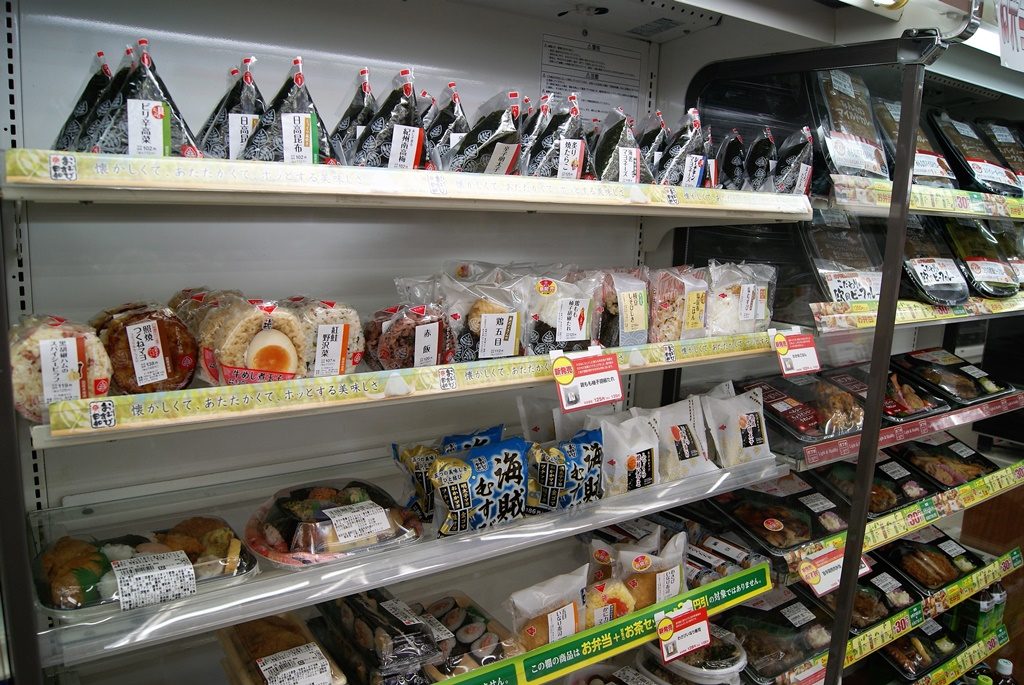
Convenience stores (a.k.a. konbini in Japanese) are also a darn good place to get cheap food. Japanese people often get their breakfast from convenience stores (or lunch, or even dinner) because they are constantly on the move.
Typical yakisoba (fried Japanese soba noodle) in a convenience store costs 250 yen to 350 yen [2.30 – 3.20 USD]. An onigiri (rice ball in a triangular shape) costs around 100 yen [0.90 USD].
If you are sick of Japanese food (which sounds totally blasphemous to me), you can go to Western fast food chains such as McDonald’s, KFC and Burger King. For McDonald’s, there is a 100 yen menu where you can get a basic, small burger for 100 yen [0.90 USD] only. I personally think that Mos Burger is a better (and healthier) choice compared to those mentioned. Mos Burger lists its price here.
Budget
Typically, you can get a bowl of hearty ramen for 800 yen – 1000 yen [7.20 – 9 USD].
If you wanna make the most out of your money, ask if there’s “kaedama” (which is literally translated as change noodle).
It basically means that if you still have some soup left, you can ask for kaedama for a small cost. They will get you another serve of ramen noodle to put it into your remaining soup.
I personally didn’t do it because 1 serving is already enough for me, but if you have a bigger appetite, you should totally try it out.

If you live a stone throw away from universities, you can have a meal at their shokudou (cafeteria) of the universities. They sell pretty basic student food at a very cheap price.
Conveyor belt sushi restaurants (a.k.a Kaiten Sushi) is also another budget option. Although they are not the best sushi in Tokyo, they are ubiquitous and you can have them at a lot of places. It is an experience to dine in a Kaiten Sushi restaurant. You will probably spend around 1000 yen – 1500 yen [9 – 13.50 USD] to have a satisfying meal.
Stand-up sushi bar like Uogashi Nihonichi offers fresher sushis at a cheaper price. It is cheaper because there are no seats available, as the name implies. In return, you can watch the sushi chef in action as he will be preparing your sushi (or nigiri) right in front of your eyes. They have a few stores in Tokyo, and this particular one below is located in Shinjuku.


Not too Budget
Have a fancy meal at a decent restaurant during lunch hour.
Many Japanese restaurants offer a lunch menu, or lunch hour specials, or all-you-can-eat buffet for a price that is heavily discounted compared to their dinner menu.
That means, expensive Japanese food such as Teppanyaki, Kobe beef, Donburi, and etc, becomes more affordable at this hour.
Wanna try Wagyu beef? You can get it for around 2000JPY/ 18USD, compared to 4000JPY/ 36USD if you dine in the same restaurant in the evening.
Fond of some tempura? Get a full tempura set for only around 1600JPY/ 15USD.
In short, make full use of your lunch hour. Restaurants like this can be found anywhere from the subway stations to the highest floor of most high rise buildings. Search around and pamper your tummy.
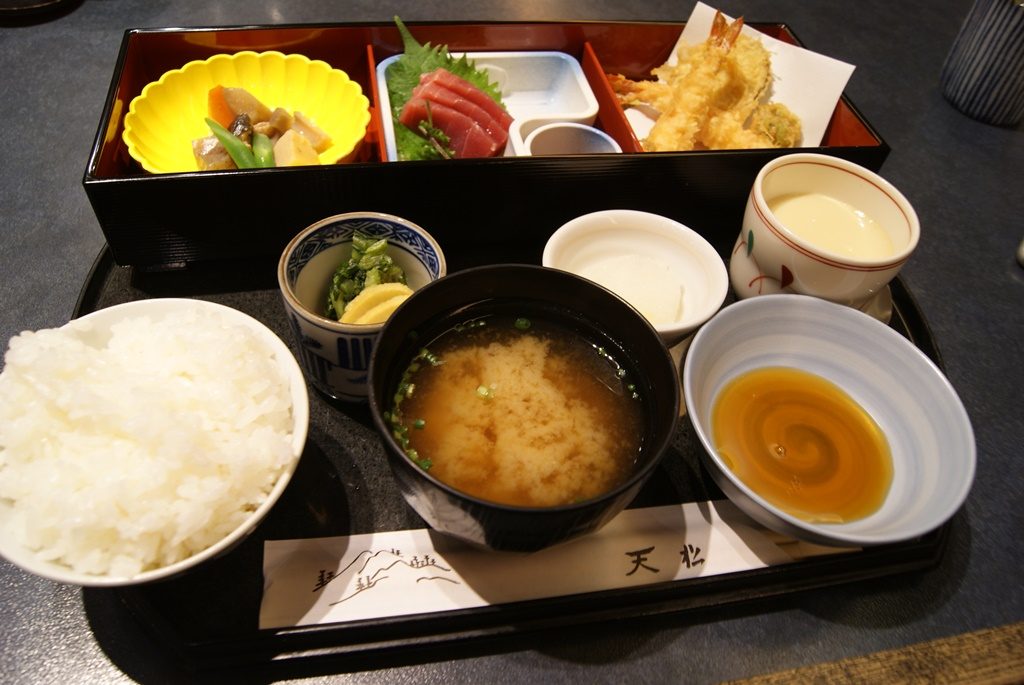
Expensive
Tokyo tops the list of the city with the most Michelin-starred restaurants. With 217 Michelin-starred restaurants, Tokyo is a light-year ahead of its nearest rival, Paris, which has a mere 94.
If you have the dinero, and you are a foodie, Tokyo is probably the best city to splurge. According to my host, it is not uncommon to pay 5000-10000JPY/ 45-90USD for dinner in a good restaurant in Tokyo. You might need to pay even more to visit a Michelin-starred restaurant.
Money
This part of the Tokyo Travel Guide discuss everything about money that you need to know during your stay in Japan. Despite being a modern nation, Japan hasn’t gone into the cashless era yet.
This section of the Tokyo travel guide will deal with all the ATMs, tipping culture and other money-related issues in Japan.
ATM
Luckily, ATMs are everywhere. You can normally find them in the city centre and the convenience stores.
If you are withdrawing your money from any Japanese bank ATM, you will normally be incurred ATM fees of 100-200JPY/ 1-2USD, on top of the international fees that your home bank will charge you.
If you are with one of the many international banks that have a presence in Tokyo, withdraw from their ATM so that you won’t be incurred any fees.
I was with Citibank so there wasn’t any charges incurred.
Tipping
Instead of having a tipping culture, Japan has a strong “no-tipping” culture. There was once I was having supper at an Izakaya (Japanese beer house) and I had 100 yen change.
I asked them to keep the change and they kept refusing it to the point that they were a little annoyed (although they are still really polite). Save yourself from some trouble and don’t leave any tip.
Bureau de Change
First of all, I strongly advise against bringing a large sum of money with you.
Although Japan is a safe country, you are still at risk. It’s just a dumb thing to do.
I always have a few options to pay: debit card, credit card (travel-specific), cash and sometimes travellers check.
If you are arriving at Narita airport, you can consider changing your currency to yen at the official Bureau de Change. They tend to offer better rates than most of the shops and hotels in the city (although some banks offer better exchange rates, but they charge 3% fees of the sum that you changed).
The Bureau de Change at Narita did not charge any commission fees or other charges when I used their service.
You can also go to the post office to change your currency into JPY.
Alcohol
A Tokyo Travel Guide will not be complete without this section – alcohol. There are so many kinds of alcohol in Japan. The best thing about alcohol in Japan is that you can also buy it in the convenience stores – which means you can get alcohol all the time as the convenience stores are open 24/7!
Alcohol
Japan has large breweries that produce their own beers (Think: Asahi, Sapporo, Kirin). As beer is heavily taxed in Japan, it is quite expensive. These breweries cut down costs by watering down the malt liquor. That’s why most of the Japanese beers are lagers. You can get a can of beer for 150-200JPY/ 1.40-1.80USD from a supermarket or from a convenience store.
On the other hand, hard liquor is comparatively cheaper. If you are a whisky or a bourbon lover, you will drown in happiness.
Wine is also pretty cheap in Japan. For some reasons that I yet to find out, imported wines in Japan were not expensive!
They are normally imported from Argentina, Chile, Italy or Australia. I was surprise that I could get a bottle of quality Chilean sauvignon blanc for 1000 yen [9 USD].
You should also try sake (pronounced as: Saa-kay) or shoju when you’re there.
Sake is brewed from rice (around 10% alcohol) and Shoju is brewed from sweet potato (around 25% alcohol). Try both the original and the flavoured ones and you will love both of them. Sake is one of the cheapest way to get drunk (if you want to) in Japan. It comes in all sizes (and also a 5L size). Note: Some people get a really really bad hangover after drinking but some don’t.
Hope lady luck is on your ship.
Nightlife
Nightlife
Good news to the nocturnally-inclined: nightlife in Tokyo is awesome! There are a lot of places for a wild night out, but I will only write about the main duo: Roppongi and Kabuki-cho.
Don’t know where to go for your night out in Tokyo? Take part in the most famous Pub Crawl in Tokyo!
Roppongi is an upscale party area that specifically caters to fun-loving expats and foreigners. Nightclubs and bars normally play Western music. However, partying in Roppongi can be really expensive if you don’t know where to go.
Pre-drinking is a common practice in Japan as drink prices in clubs and bars are insanely expensive (Read: a few drinks for 80 USD if you don’t know where to go!)
There are also clubs that offer all-you-can-drink or buffet menu as cheap as 1000JPY/ 10 USD (Jumanji 55). After drinking, just head up to Odeon and party like there’s no tomorrow.
Kabuki-cho, on the other hand, is dominated by the Japanese. Also known as the “Sleepless Town”, this street has everything that you can think of. E.g. Karaokes, host and hostess clubs, love hotels, Japanese bars (Izakaya), gay pubs and bars.
You can also find shrines in this Japanese red light district! Kabuki-cho can be also quite expensive, so always check the prices before you commit to something.
Do not go in any of the premises before checking the prices. There is always a surcharge for taking a table.
Bring more cash if you are planning to have a big night out (but be careful!). Most of the establishments in Tokyo (including these) do not accept cards. If you don’t have much cash or don’t wanna party, stroll along Kabuki-cho and admire the neon-lit adverts!
Love it? Pin it!

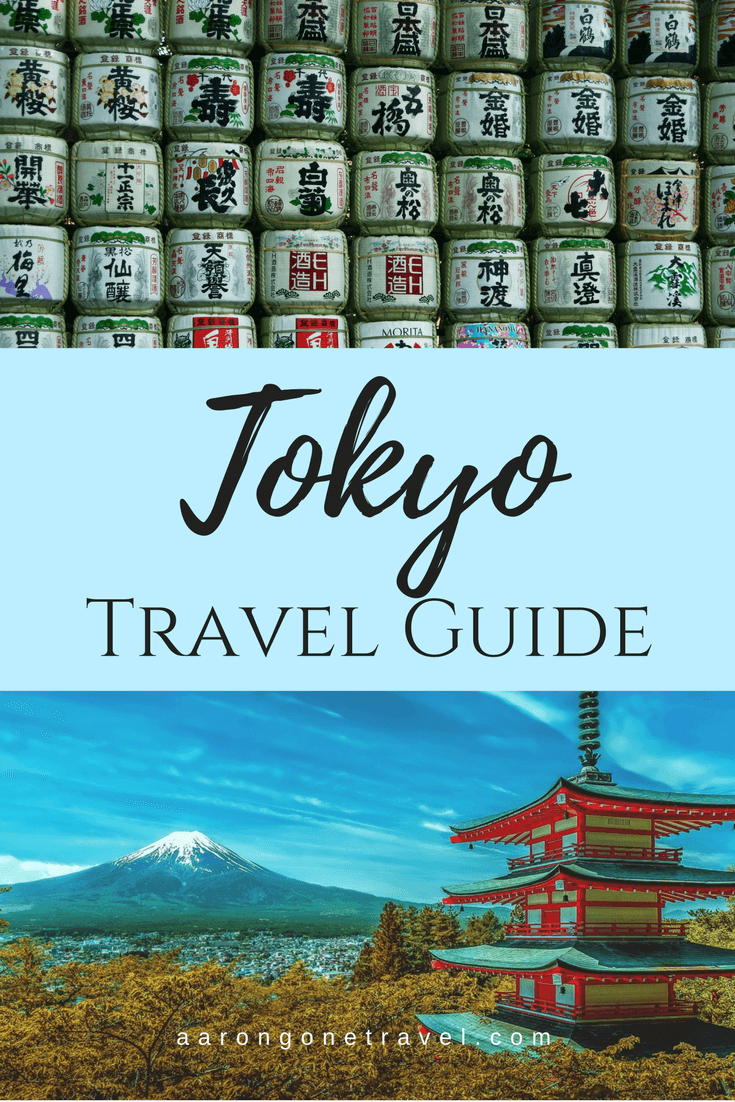

Read More:
This post contains affiliate link(s). An affiliate link means I may earn advertising/ referral fees if you make a purchase through my link, without any extra cost to you. It helps to keep this little website afloat. Thank you for your support! Hugs and kisses from Melbourne!

